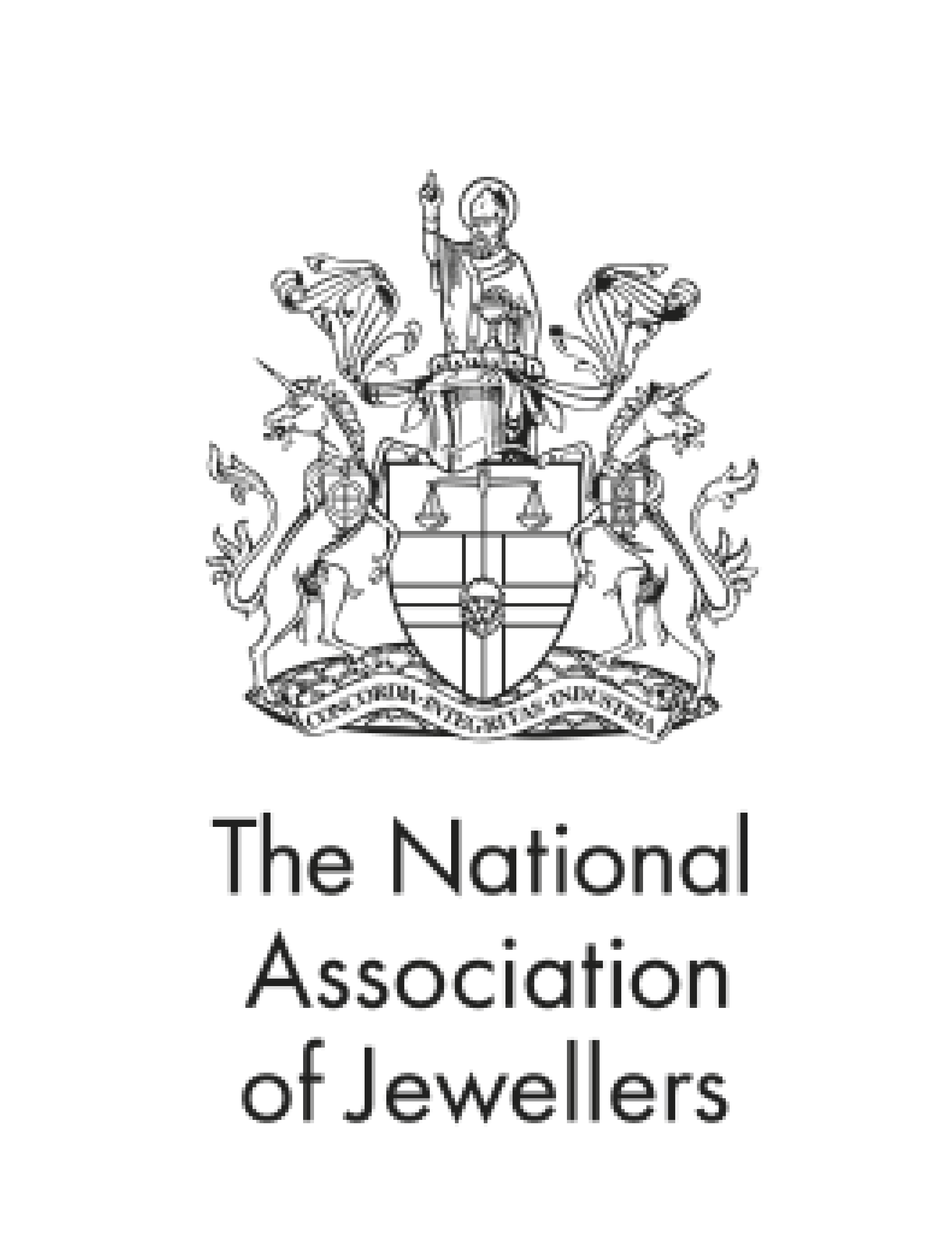When it comes to diamonds, the cut is one of the most crucial factors in determining their brilliance and sparkle. The way a stone is shaped and faceted directly impacts how it catches and reflects light, making it essential to choose wisely when selecting your perfect piece of diamond jewellery.

In this article, we will explore the anatomy of diamond cuts, breaking down the different styles available and why each one plays a vital role in a stone’s overall beauty and allure. Whether you are searching for timeless elegance or a modern statement, understanding diamond cuts will help you make an informed and confident choice.
Understanding the 4 C's of Diamonds

Before exploring the intricacies of diamond cuts, it is essential to understand the 4 C’s - the universal standards for assessing a stone’s quality. These four key factors determine a diamond’s brilliance, rarity, and overall value. This includes the Cut, Colour, Clarity, and Carat.
Cut – The Key to Sparkle
We begin with the most important factor: cut. This refers to the stone’s proportions, symmetry, and how its facets interact with light. A well-cut piece maximizes brilliance, ensuring a dazzling display of fire and sparkle.
Colour – The Purity of Hue
A diamond’s colour is graded on a scale from D (colourless) to Z (light yellow or brown). The rarest and most valuable diamonds fall within the D-F range, exhibiting exceptional purity. However, certain stones, known as Fancy Coloured Diamonds, feature vibrant hues such as pink, blue, or yellow, making them highly sought after.
Clarity – The Story Within the Stone
Clarity measures the presence of inclusions (internal features) and blemishes (surface imperfections). Stones are graded from Flawless (completely clear) to Included (visible imperfections). The fewer inclusions a stone has, the rarer it is.
Carat – The Weight of Rarity
Carat weight significantly impacts a diamond’s value. One carat is equal to 0.2 grams and is divided into 100 points. Larger stones are more desirable due to their rarity, but a well-cut piece can enhance the visual appeal regardless of carat size.
At Michael Spiers, we believe that quality is paramount. Each piece of our diamond jewellery is meticulously hand-picked to ensure it meets the highest standards of excellence, offering only the finest brilliance and craftsmanship.
The Anatomy of a Diamond
Before exploring the different stone cuts, it is essential to understand the anatomy of a diamond - the key structural elements that influence its brilliance, fire, scintillation and overall appearance.
Table: The flat, topmost surface of the stone.
Crown: The upper portion above the girdle.
Girdle: The outer edge that separates the crown from the pavilion.
Pavilion: The lower portion below the girdle that directs light back through the crown.
Culet: A small facet at the bottom of the pavilion, sometimes pointed or flat.
Facets: The polished surfaces that form the diamond’s crown, pavilion, and table, influencing its sparkle.
Depth: The distance from the table to the culet, affecting light reflection and brilliance.
Diameter: The width of the stone when measured across the girdle.
Symmetry: The precision and alignment of the diamond’s facets, contributing to its optical performance.
Polish: The smoothness and quality of the diamond’s surface, affecting its luster.

When evaluating a piece of diamond jewellery, these elements are meticulously inspected, as they ultimately define the diamond’s beauty and value.
Understanding Diamond Cuts
Now that you have a solid understanding of a diamond’s anatomy, it is time to explore one of the most critical factors in determining its beauty and value - the cut. As we discussed earlier in the 4 C’s, cut refers to the precise way a stone’s facets are proportioned, shaped, and aligned when crafting a piece of jewellery. This directly impacts how light is reflected and refracted, ultimately defining the diamond’s brilliance and sparkle.

A well-cut diamond interacts with light in a mesmerising way, producing vibrant flashes of colour and intricate patterns - especially when paired with high clarity. You may recall the terms brilliance, fire, and scintillation, that we mentioned earlier, which play a crucial role in a piece’s dazzling visual appeal.
Brilliance
Brilliance refers to the intense white light that a stone emits as it captures, reflects, and returns light to the eye. A well-cut diamond maximises this effect, allowing light to bounce seamlessly off its precisely angled facets, creating a mesmerising, radiant glow. The better the cut, the greater the brilliance.
Fire
Also known as dispersion, fire is the effect where a diamond splits white light into a stunning display of rainbow-like spectral colours. This phenomenon is especially noticeable when the stone is exposed to direct light. The angles and precision of the facets play a major role in determining the intensity of fire a piece exhibits.
Scintillation
Scintillation refers to the flashes of light and sparkle that a piece displays when it moves or when viewed from different angles. It is the dynamic play of light that makes a diamond appear alive and radiant, constantly shifting in brilliance as it catches light from various directions.
With so much to consider, let us explore the different diamond cuts and how they influence these dazzling effects!
Types of Diamond Cuts
A diamond cut refers to the style or design used when shaping a diamond for polishing and crafting jewellery. The choice of cut significantly impacts the stone’s brilliance, fire, and overall aesthetic. There are various diamond shapes, each suited to different types of jewellery pieces. Below are some of the most popular cuts:
Round Brilliant
The Round Brilliant Cut is the most popular diamond cut, designed to maximise light reflection and enhance brilliance, fire, and scintillation. Its symmetrical shape and expertly crafted facets create exceptional sparkle, making it a top choice for engagement rings.

Princess
The Princess Cut is highly sought-after for its contemporary geometric shape and sharp, clean angles. Featuring a large top surface area, it enhances light reflection, often appearing larger than other cuts of the same carat weight. This cut is commonly used for solitaire engagement rings and stud earrings.

Cushion
Available in both square and rectangular shapes, the Cushion Cut features soft, rounded corners and unique faceting that adds to its vintage appeal. Due to its versatility, this cut allows for various modifications based on the cutter’s preference, resulting in different styles.

Oval
As the name suggests, the Oval Cut features an elongated, soft shape that offers a distinctive alternative to the Round Brilliant. This shape helps create the illusion of longer, more slender fingers, making it a popular choice for rings. Additionally, oval-cuts make stunning centrepieces for necklaces.

Emerald
Elegant and timeless, the Emerald Cut is a rectangular shape with step-cut facets that highlight the diamond’s clarity rather than its brilliance. Originating in the United States in the 1930s and 40s, this sophisticated cut is best suited for diamonds with exceptional clarity, as inclusions are more visible due to its large, open facets.

Marquise
The Marquise Cut features an elongated elliptical shape with pointed ends, similar to the Oval Cut but with a more dramatic silhouette. Resembling a teardrop, this shape is excellent for rings, earrings, and pendants, as it maximises perceived size and enhances overall brilliance.

Pear
A unique fusion of the Marquise and Oval cuts, the Pear Cut has a rounded end and a pointed tip, creating a teardrop shape. This cut is often used for rings and earrings, as its elongated form pairs beautifully with well-proportioned settings, enhancing its elegance.

Heart
The Heart Cut is one of the most romantic and rare diamond shapes, requiring expert craftsmanship to achieve perfect symmetry and proportions. Due to the precision involved, only highly skilled Gemmologists create heart-shaped pieces, making them a true testament to artistry and love.

Each cut offers distinct characteristics that cater to different styles and preferences. Whether you prefer classic brilliance, modern geometric precision, or vintage charm, there is a perfect diamond cut for every jewellery piece.
The Art of Cutting Diamonds
Diamonds come in an exquisite array of cuts, each designed to enhance their brilliance and beauty in fine jewellery. At Michael Spiers, we meticulously select the most stunning stones to ensure every piece meets our exceptional standards.
Whether you are searching for a gorgeous pair of diamond earrings or a striking diamond ring, our collection offers something truly special. If you are looking for more information surrounding Gemmological studies, then you can visit the GIA website.
For expert guidance and a personal touch, visit one of our showrooms in Truro, Plymouth, Exeter, or Taunton. Our knowledgeable team is always on hand to help you discover the perfect piece.








